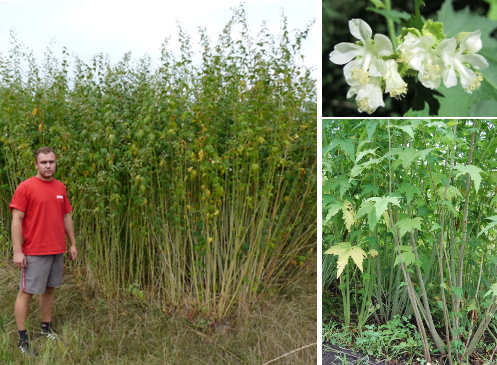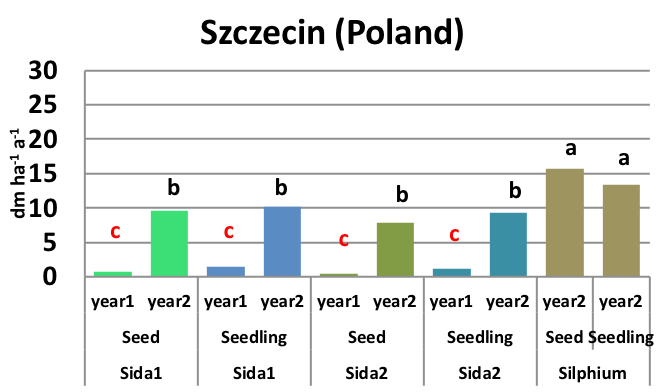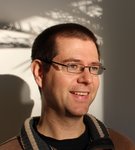SidaTim
Novel Pathways of Biomass Production: Assessing the Potential of Sida hermaphrodita and Valuable Timber Trees (SidaTim)

The aim of SidaTim is to strengthen the European bio-based economy by researching and promoting potentials of new land use concepts that comprise
- innovative multipurpose plant species and
- novel agricultural management approaches.
Background
Current trends in agriculture foster intensification of the cultivation management that often results in monoculture cultivation, nitrate leaching, soil erosion, and biodiversity decline. Also, the European woody biomass economy indicates that wood produced in forests, both for energy and for timber, will not cover future demand.
Hence, new land use approaches are needed to enhance the sustainability of agriculture and the production of lignocellulosic biomass. One approach to achieve this goal lies in the optimized management of agroforestry systems, i.e. growing trees in combination with other crops on the same land unit.
Objective of SidaTim
The project SidaTim assesses the potential of agroforestry systems that consist of valuable timber trees grown in combination with biomass plants such as Sida and Silphium.
Methodology
- Establish, manage and monitor experimental field sites with Sida and Silphium with regard to biomass production and ecologi-cal aspects
- Develop growth, carbon storage, and crown shading models for valuable timber trees on agricultural land (including pruning treatment)
- Combine the two research foci; model agroforestry systems; evaluate economics of the management systems
- Address farmers, biomass consumers, policymakers.
Results and key findings
Below, we present key findings pertaining to the two foci of SidaTim. 
Biomass yieds of Sida and Silphium in the first two years of growth. The data pertain to experimental plots in Poland with two provenances of Sida and one provenance of Silphium. All were established using seeds and seedlings.

Three-dimensional tree-model derived from terrestrial laser scans and its shadow projection, showing the annual solar energy reduction on the ground below.
Publications
In peer-reviewed journals
- Virginia mallow (Sida hermaphrodita (L.) Rusby) as perennial multipurpose crop: biomass yields, energetic valorization, utilization potentials, and management perspectives.
GCB Bioenergy, 10, 393–404. doi: 10.1111/gcbb.12501.
By Nahm M, Morhart C (2018) - Precision subsurface drip irrigation increases yield while sustaining water use efficiency in Mediterranean poplar bioenergy plantations.
Forest Ecology and Management, 409, 749-756. doi: 10.1016/j.foreco.2017.12.013
By Paris P, Di Matteo G, Tarchi M, Tosi L, Spaccino L, Lauteri M (2018) - Modelling shadow using 3D tree models in high spatial and temporal resolution
Remote Sensing 9, Article ID: 719. doi: 10.3390/rs9070719.
By Rosskopf E, Morhart C, Nahm M (2017).
Other publications
- SidaTim: Assessing the potential of new biomass crops and valuable timber trees in agroforestry systems
Extended abstract submitted for the EURAF Conference (May 28-31, 2018, Nijmegen, The Netherlands).
By Paris P, et al. (2018) - Inventory of tree hedgerows in an Italian agroforestry landscape by remote sensing and GIS-based methods
Extended abstract submitted for the EURAF Conference (May 28-31, 2018, Nijmegen, The Netherlands).
By Chiocchini F, et al. (2018) - Modelling shadow in agroforestry systems based on 3D data
Extended abstract submitted for the EURAF Conference (May 28-31, 2018, Nijmegen, The Netherlands).
By Morhart C, Rosskopf E, Nahm M (2018) - Evaluation of new perennial grasses for biomass production in Italy.
Proceedings of the 25th European Biomass Conference and Exhibition (June 12-15, 2017, Stockholm, Sweden), 276-279.
Facciotto G, Bergante S (2017) - Performance of Sida hermaphrodita and Silphium perfoliatum in Europe: preliminary results. Extended abstract submitted for the European Biomass Conference and Exhibition (May 14-17, 2018, Copenhagen, Denmark).
By Facciotto G, et al. (2018) - Potenziale nachhaltiger Landnutzung mit Agroforst-Systemen am Beispielprojekt SidaTim.
Proceedings of the congress EcoInnovations from Biomass (June 28-29, 2017, Papenburg, Germany); p. 12.
By Nahm M, Morhart C (2017) - Multifunktionalität und Vielfalt von Agroforstwirtschaft. In C Böhm: Bäume in der Land(wirt)schaft – von der Theorie in die Praxis.
Proceedings of the 5. Forum Agroforstsysteme (November 30 – Dezember 1, 2016, Senftenberg, Germany); p. 17-24.
By Nahm M, Morhart C (2017).

Coordinator:
Dr. Michael Nahm
Albert-Ludwigs-University Freiburg, Germany
Email: michael.nahm@iww.uni-freiburg.de
Project partners:
- 3N Centre of Experts - Lower Saxony Network for Renewable Resources e.V., Germany
- Consiglio per la ricerca in agricoltura e l'analisi dell'economia agraria (CRA), Italy
- Institute of Research on Terrestrial Ecosystems, Italy
- Cranfield University, United Kingdom
- West Pomeranian University of Technology in Szczecin (WUT), Poland
Total funding: 981.000 €
EUBCE Presentations
Preliminary results regarding yields of virginia mallow (Sida hermaphrodita L.) and cup plant (Silphium perfoliatum L.) in different condition of Europe.
Presentation, EUBCE 2019